The Talk Sea Fishing guide on how to catch red mullet from the boat and the shore in the UK and Ireland.
A somewhat localised and rare catch here in the UK and Ireland, but a fish that due to warmer seas generally, is another making its presence felt more and more and extending its range further and further north.
Although called “red mullet” they are actually not a mullet, not even closely related, they are from the goatfish family Mullidae.
They were a favoured dish of the ancient Romans who reared them in ponds in the Mediterranean and even taught them to come and feed at the sound of the carers voice or a bell. They were often sold for their own weight in silver indicating how highly prized they were for the table.
To be honest, there is little real information available about red mullet in UK waters from books and websites regards angling, yet they are becoming a very realistic target now with rising sea temperatures and their captures need recording better than they are currently.
A distinctive fish and one that’s hard to imagine being confused with any others, bar maybe the red gurnard.
The red mullet’s body is slightly rounded but flattened too, and the forehead is steeply arched. The eye sits high on the head and has two prominent scales below the eye on the upper cheek. It is covered in large body scales which easily come away when handled. Also look for the two long barbels that are prominent on the front underside of the lower jaw.
The colouration is bright red in some, but otherwise reddish-brown with yellow stripes and a darker stripe from head to tail. There is often a dark blotch at the top of the first dorsal fin. Coloration is governed by depth and light level. The colouring becomes more mottled in lower light levels and a much deeper red when in water exceeding 45ft (15m).
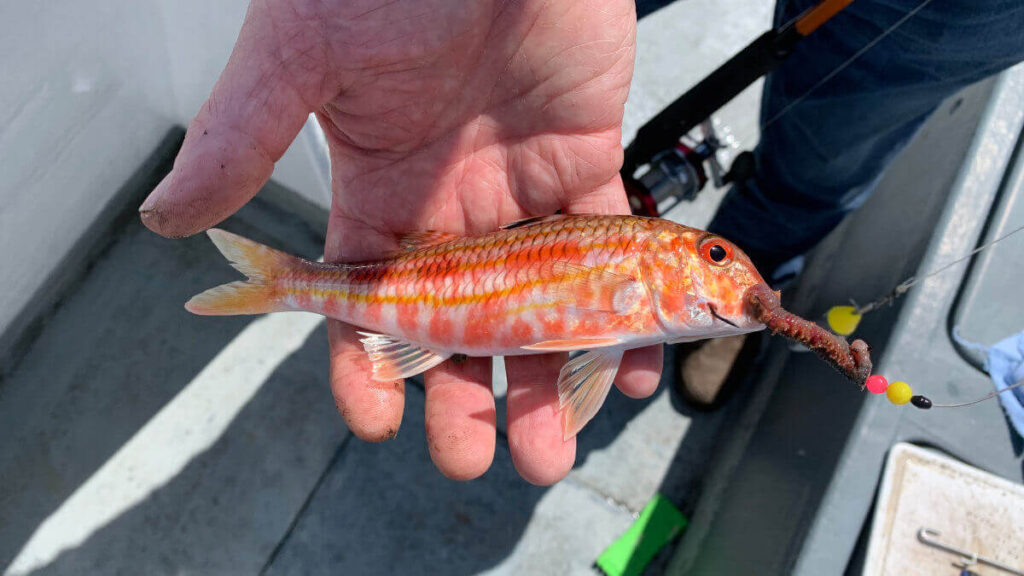 Image kindly supplied by Dean Gifford
Image kindly supplied by Dean Gifford
They are found throughout the Mediterranean Sea, down the coast of North Africa, up the European coast through the Bay of Biscay and as far north as Holland.
In the UK they are a southern-based fish found throughout the English Channel as far as Kent and Essex, and occasionally Suffolk. In the west, they frequent Devon and Cornwall, inside the Bristol Channel, up the Welsh coast and as far north as Morecambe Bay and the Mull of Galloway, though red mullet here are on the very fringe of their northward migration and maybe be individuals.
In Ireland, they seem to be a rarer catch, though they are caught from the Wicklow and Wexford coast, but more so from Cork and Kerry. A hotspot seems to be in the Kilmore Quay to Cork Harbour area.
Red mullet favour soft seabeds composed of sand, sand and mud, or mud. They also like to be close to eelgrass beds and shallow kelp weed. They like some depth of water being less likely to be caught on shallow surf beaches, but more likely caught from steep-to beaches where the depth is generally 12ft or deeper.
They also favour small sandy bays surrounded by rocks and are often caught from clean sand close to piers, breakwaters and jetties, mainly due to the added depth. Rock ledges that give onto clean sand can also be a good place to fish.
They will also be caught on hard rocky bottoms occasionally such as shallow reefs, but again it's mostly when close to weed beds and on reefs that are surrounded by sand or sandy patches.
They also form small groups or shoals of up to a dozen fish or so, sometimes more.
Its diet consists mainly of worms, small crustaceans and shellfish, but it will also scavenge off the seabed taking whatever it can find. It uses its barbels, which are covered in sensory pores designed to detect buried food, under the chin to dig down and feel for food items buried a few inches down, plus will dig out a round pit to uncover food that’s deeper.
Red mullet are not big fish averaging from just a few ounces up to 2lbs, but they can grow to 4lbs or so.
The earliest you can expect red mullet in the south of the UK and Ireland is early July, but it’s usually the end of the month before numbers really grow. Further north off Wales and Morecambe Bay it’s often very late July or early August before they arrive. August and September are good months to target them, but once the sea temperatures peak or the autumnal storms arrive they are quickly gone.
In years with a cold late spring, then they may not show in any real numbers at all and will not penetrate as far north as they normally would. Equally, in years with an early warm spring and summer that induce higher than average sea temperatures, then their numbers will be at peak levels.
Red mullet can be caught on all sizes of tides, even smaller neaps when fishing deeper water from the boat. On the shallower marks, then they tend to come in with the bigger tides in the better numbers and are obviously more active during the faster tide flows.
They can be caught throughout the flooding tide, but generally, they are best targeted when the flow is running during the middle flood and middle ebb period.
For consistent fishing, you’re looking for periods of calm, warm weather with settled seas and light onshore winds. Even light offshore winds can work well for this fish. They will tolerate some colour in the water, but they dislike rough seas and will be way out in deeper water. It will also take a few tides or two or three days for conditions to settle enough to their liking before they move back inshore.
Red mullet are caught by day, sometimes at dusk and dawn, but they are like wrasse and are not active by night.
With the average fish being smaller than 2lbs, then very light tackle can be used. In deer water with some tide run, a 6/12lb class rod about 8ft in length matched to a small 6500 sized multiplier loaded with 20lb braid is effective. Add a fluorocarbon leader twice the length of the rod to eliminate any visual contact by the fish regarding the braid line colour.
In areas where there is less tide flow, then an HRF rod or light spinning rod casting no more than 2ozs is the better choice. Use a fixed spool reel size 3000, or even a smaller 2500 size, on this and load with a 12lb braid and again a short fluorocarbon leader of 15lbs. Very light gear like this helps combat the use of heavier leads in any tide run, plus gives maximum bite detection. Some anglers use normal 5 to 15g LRF rods and 2500 sized reels with 8lb braid in harbours and sheltered bays, so use what you think is appropriate regarding the conditions and depth you are fishing.
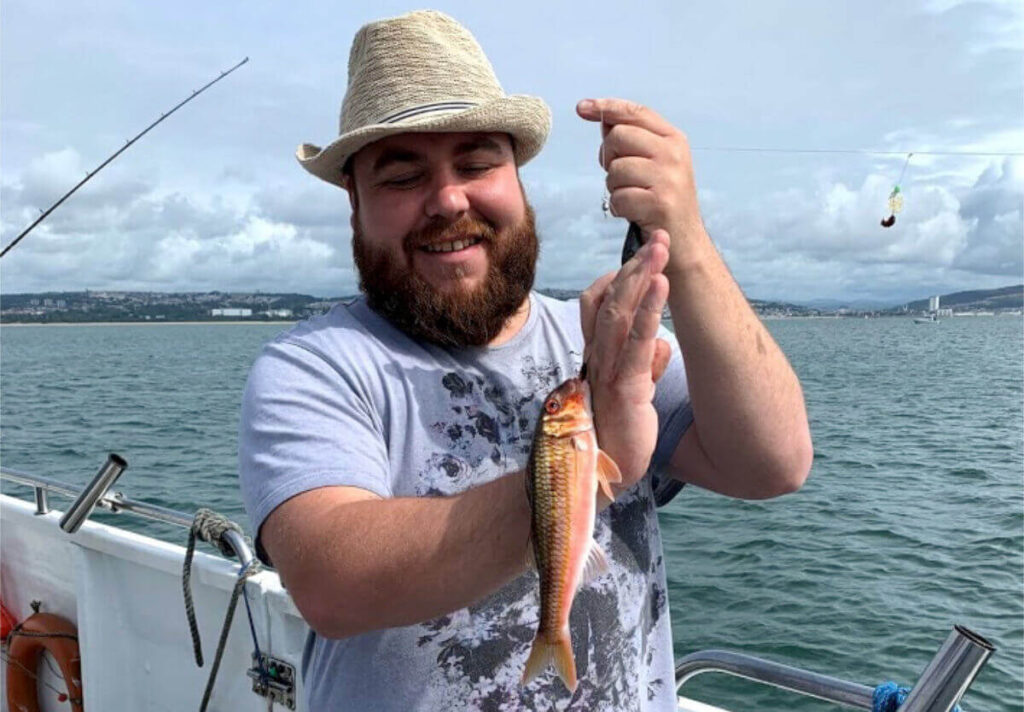 Image kindly supplied by Dean Gifford
Image kindly supplied by Dean Gifford
Hook sizes do not need to be any bigger than a size 2 Aberdeen. In fact, smaller sizes 4 to 6 Kamasan B940 hooks suit red mullet best. The longer shank avoids deeper hooking as these fish can easily swallow baits.
It is important to keep the baits hard on the seabed. To achieve this, we need to use a flowing trace rig. Here’s how to tie it:
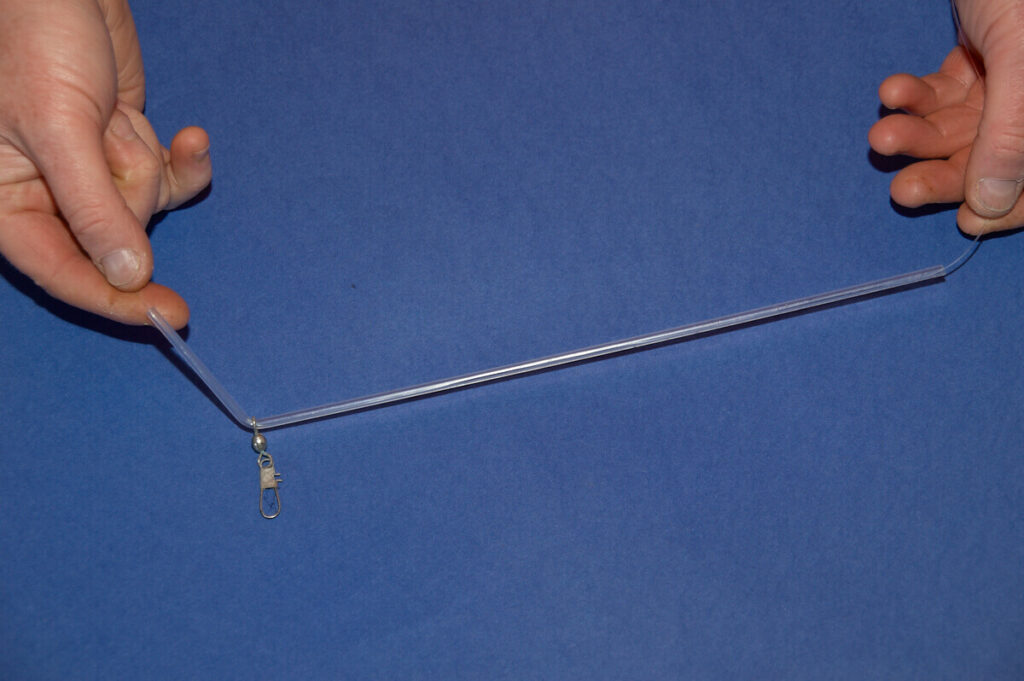
1 - Onto the Fluorocarbon leader, slide on a 6’ clear coloured tube boom. The lead weight is attached to the link swivel on the boom.
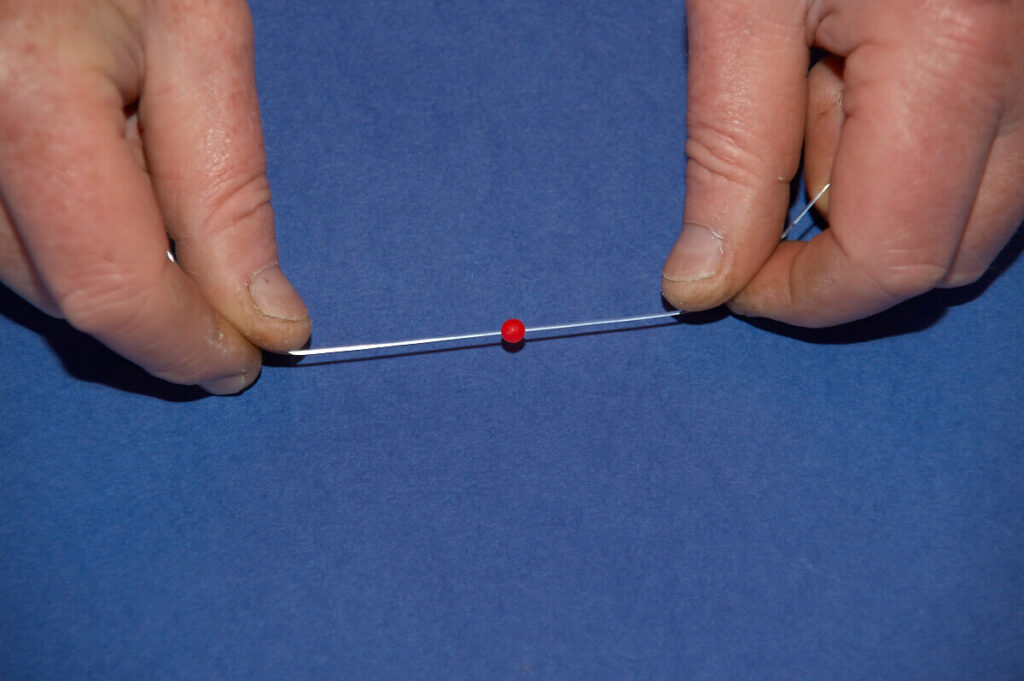
2 - Slide on a 5mm bead.
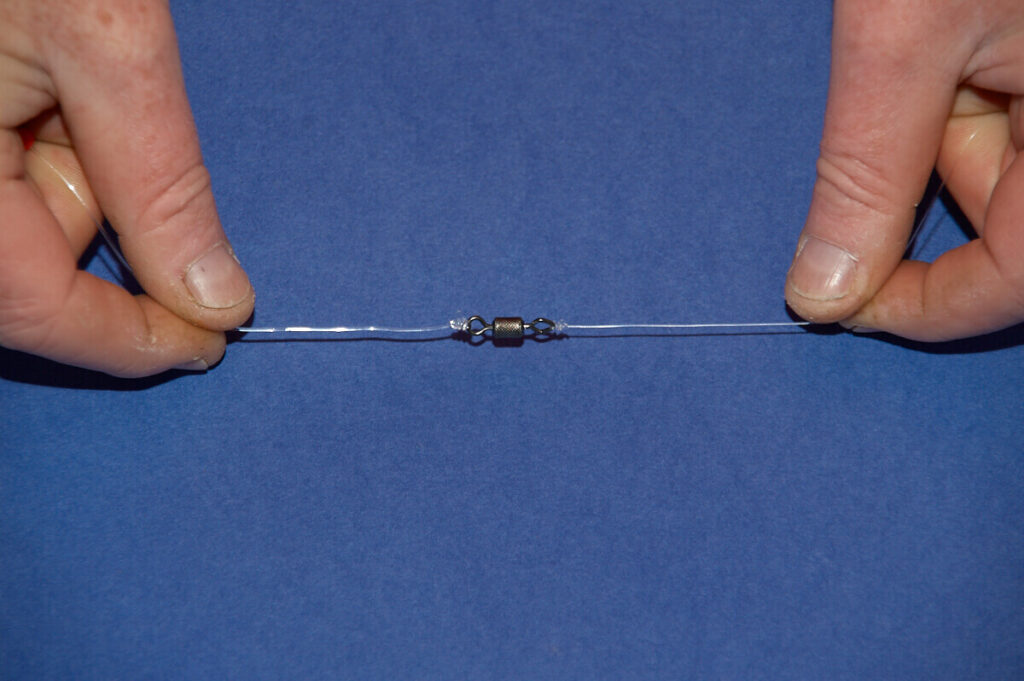
3 - Below the bead tie on a side 6 rolling swivel and then tie on 36in of 15lb Fluorocarbon.
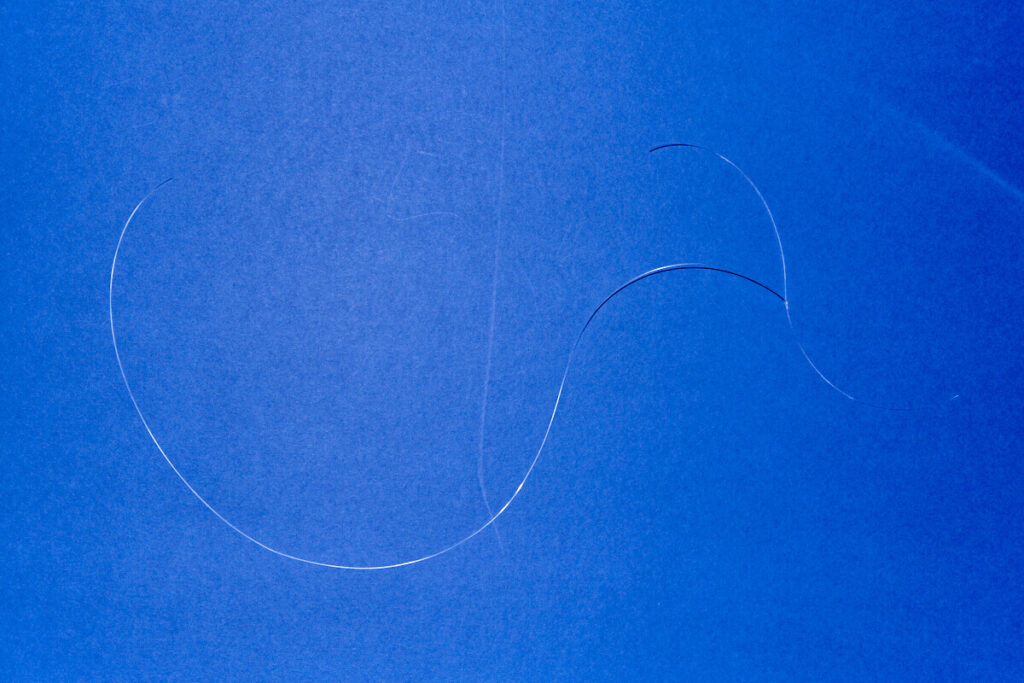
4 - Form a 30in loop in the Fluorocarbon and secure the loop by tying in a figure of eight knot. Then, cut the loop 6ins below the figure of eight knot to create one short and one long hook length.
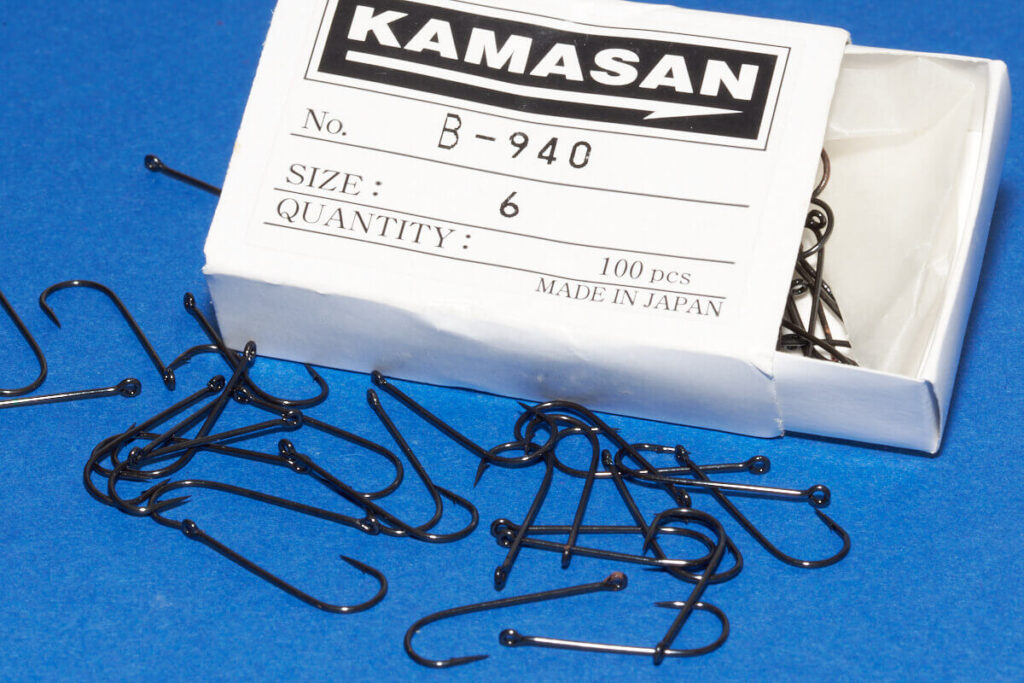
5 - Tie on a size 4 to 6 Kamasan b940 Aberdeen or equivalent pattern.
This creates a rig that in a slack tide won’t tangle too easily when dropped to the seabed, but allows the baits to wash around gently over the seabed where the red mullet are hunting.
Some anglers say they’ve had success using brightly coloured beads, but this fish has good eyesight and the general feeling is that beads can actually put this fish off, so bear this in mind. Rigs that naturally present baits are the best way to go.
The above reason is also why we recommend the use of fluorocarbon hook lengths. In shallower clear water this is less easily seen by the fish and undoubtedly gives you an edge.
However, a quick and effective way to catch red mullet if present is to fish baited feathers. The ones to use are any with a lumo green body, silver tinsel type ones that imitate small fish, but especially the small shrimp rigs tied with lighter mono and smaller hooks of size 6 or 8. Fish strips work best again, but cut the strips even smaller, say less than an inch, even 0.5inch passing the hook just once through one end to leave lots of fish strip loose and hanging free.
We’ve already hinted that red mullet are scavengers and will eat most things and this is reflected in the baits they are most likely to take. Lugworm, ragworm, small chunks of crab, maddie rag all work, as will fresh cockles, small mussel baits when over rougher ground, also thin strips of squid and mackerel.
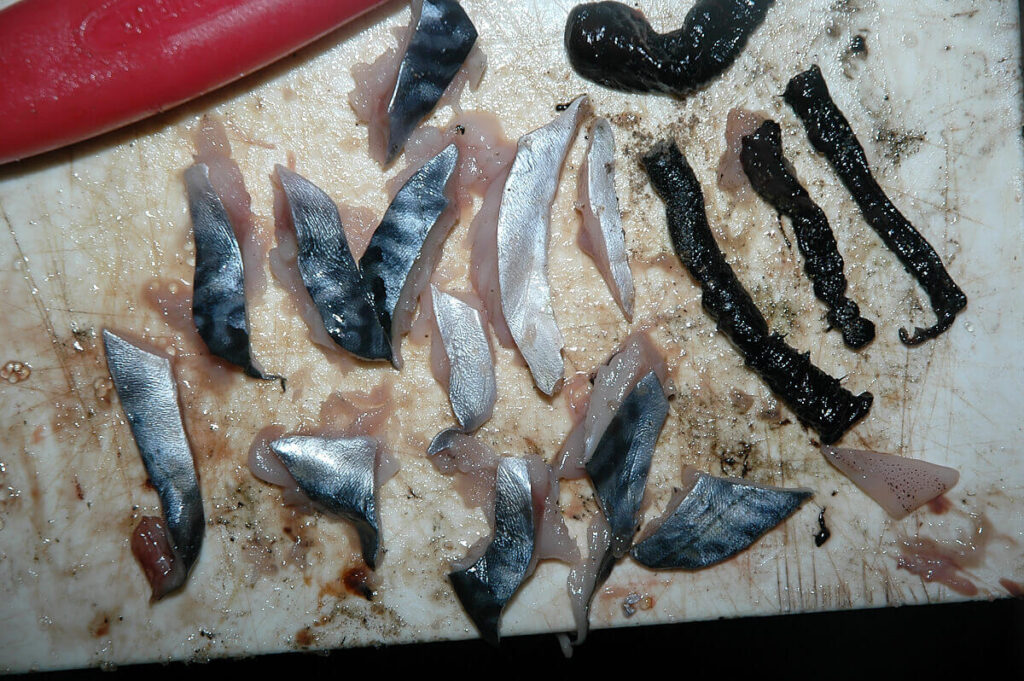
The top boat bait is a mackerel strip. This might be because it's the most used bait, but it's a must-have. Cut the strips small using a very sharp Stanley knife to get clear cut edges and a thin profile. The strip needs to be about 1-inch to 1.5-inches long and 0.25-inches wide. Use the white belly strip as this seems more effective especially if there is a little tide flow to make the bait wash over the seabed. It’s the same for squid too.
For worm baits, use only enough bait to fill the hook shank and bend, no more. Same with cockle and mussel.
Also try tipping the hook point with a small square of mackerel whatever bait you are using, just to add that bit more smell and make the fish take at the hook point end.
The only technique really, to fishing for red mullet, is to identify exactly where they are being caught from by using bush telegraph, magazines, websites, tackle shops, and any other sources of information you can utilise and fish those specific spots. That is the key element!
The actual fishing is very basic during periods of slack water or when the tide run is slow. Just ledger fish the flowing trace hard on the seabed and await results. It can pay to occasionally lift the boom and the baits up off the seabed then drop them back. This added movement and especially the fluttering down of the baits back to the seabed will get noticed by nearby red mullet and draw them in.
Bites are a series of little fast rattles. Wait until the second series of rattles then just lift into the fish and keep them coming.
As the tide run picks up and the boat drift speed increases, then as you drift along over the ground, keep letting a little line off, say 10ft every 30 seconds or so. This gives any chasing fish time to catch up and intercept a bait.
Bites are again two or three series of fast rattles. When you feel the first rattles release a little line to let the fish eat the bait. Now, just let the line tighten into the fish and lift the rod to set the hook.
If you choose to use feather or shrimp rigs, don’t lift the rod tip up too high when working the feathers. Remember that the red mullet are tight on the seabed. Just a few inches of lift is enough. Use the lightest lead weight you can to do this. Bigger leads can put red mullet off.
From the shore red mullet are most active during the bigger spring tides when the tide flow is stronger. The best tides are the tides rising upwards every day towards and including the biggest tides. As the tide cycle peaks and the tides then start to reduce in size, then the fish can leave the shallow marks and move out to deeper water.
Neap tides can be OK on the deeper marks such as when fishing man-made structures, or small bays, but on the open shore they are less productive.
This activity is mirrored within the tide itself with the period of flooding tide giving the best fishing and the slack water periods less so. However, unless the water is deepish, say 30ft or more, once the ebb does start to pick up speed, they quickly drop back to deeper water and are often outside casting range.
Again, you need to look for periods of calm, warm weather with very settled seas for the best fishing. They will feed in choppy seas if they have the depth over them, say 15ft or more, but generally, the more rough the sea the quicker your chances lessen. They also like gentle warm winds off the sea, sometimes warm winds off the land but anything over F4 is working against you. A light onshore breeze can increase your chances on a very bright day as the ruffle and ripple on the water reduces the amount of light entering the water column.
Remember they are not nocturnal and feed only in daylight, sometimes at dusk and dawn. Off the shore, overcast days can fish better than bright sunny days, but don’t let the latter put you off trying as they feed when it suits them.
They will tolerate coloured water to some extent, but not heavy suspended sediment directly after a blow. Ideally, the water should have some clarity to it.
As ever, much depends on the distance you need to catch and the tide run. For the majority of marks a decent cast will need to be made to reach the fish. This necessitates the use of a standard 4-6 beachcaster 12 to 13ft long with a 6500 sized multiplier reel loaded with 15lb to 18lb line and a 60lb shock leader. Also good are the Euro style rods between 14 and 15ft with a 7500 sized fixed spool with a long cast reel and loaded with 20 to 30lb braid and a 60lb shock leader.
On the deeper marks with less tide run, then the 2-4oz bass rod is the better choice, again with 5500 to 6500 reel loaded with 15lb line and a 30lb shock leader. This tackle is also suitable when fishing off piers, breakwaters and jetties.
As when boat fishing, keep hooks small, no bigger than a size 4 Aberdeens. Also have a range of leads with you including release wire leads, but also some plain bombs that you can let roll along the bottom.
The perfect rig for shore red mullet is the 1 up/1 down rig. This is designed so that the lower hook trace is hard on the seabed. And, if you fish at range or fish with a slight bow in the line, the top hook also is hard on the seabed where the fish are feeding. Here’s how to tie it….
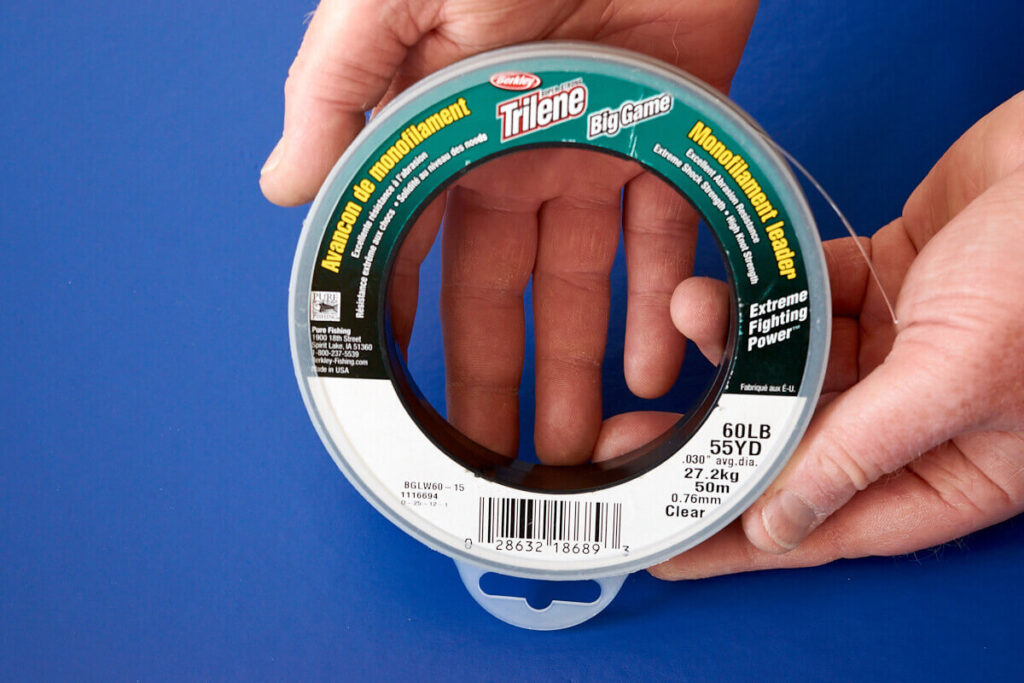
1 - Begin with 46-inches of 60lb clear mono.
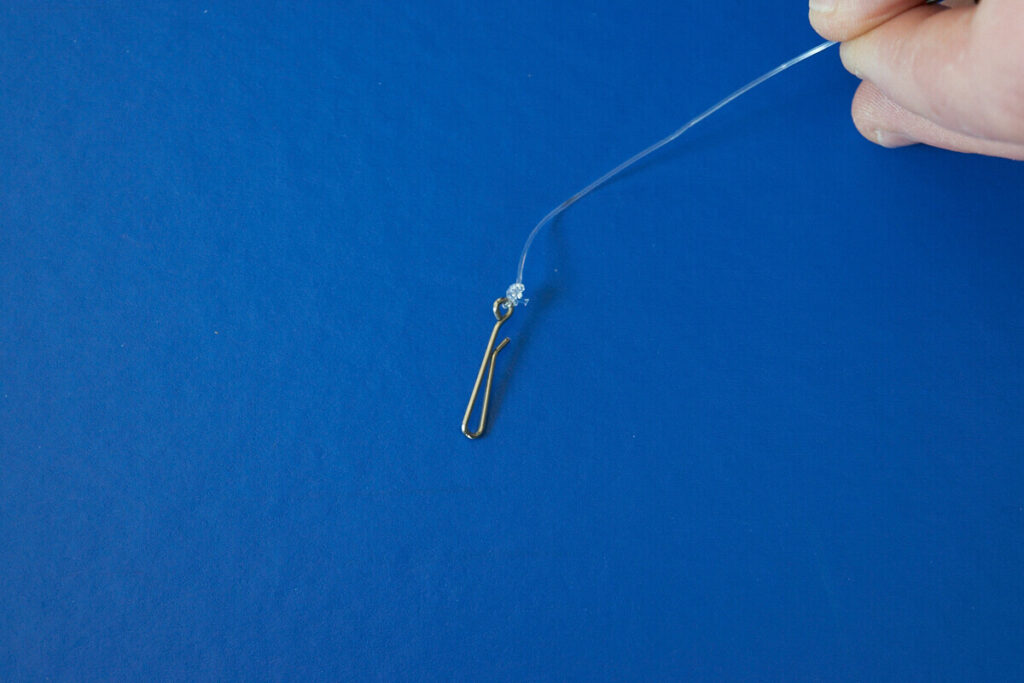
2 - At one end tie on a Gemini Lead Link.
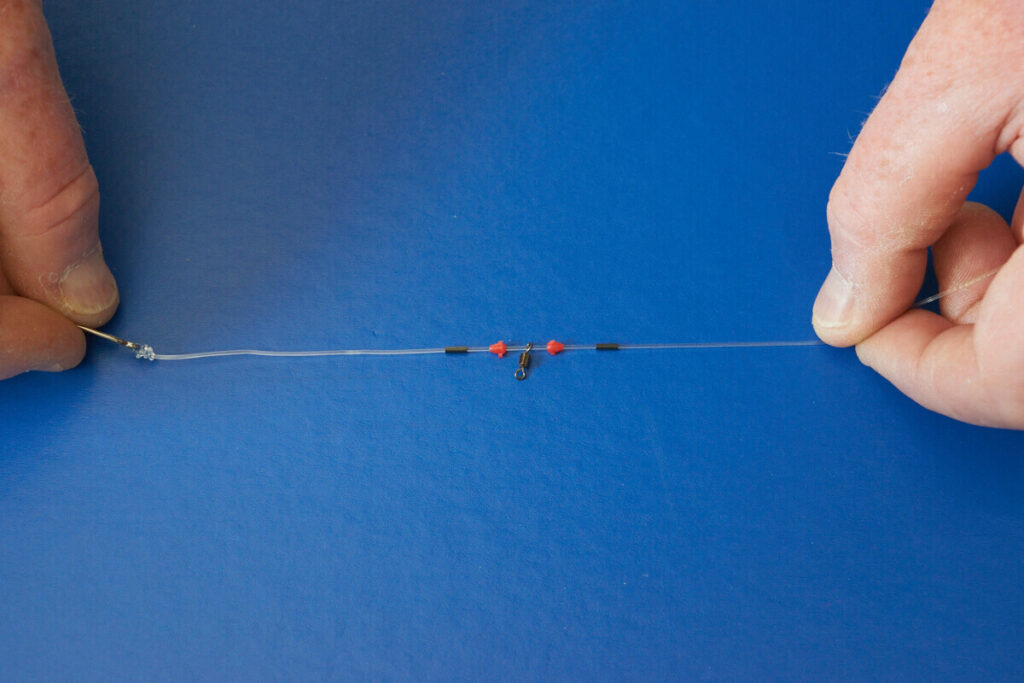
3 - Slide on a rig crimp, a 3mm bead, a size 10 rolling swivel, another 3mm bead and a crimp. Crimp these in place tight behind the lead link.
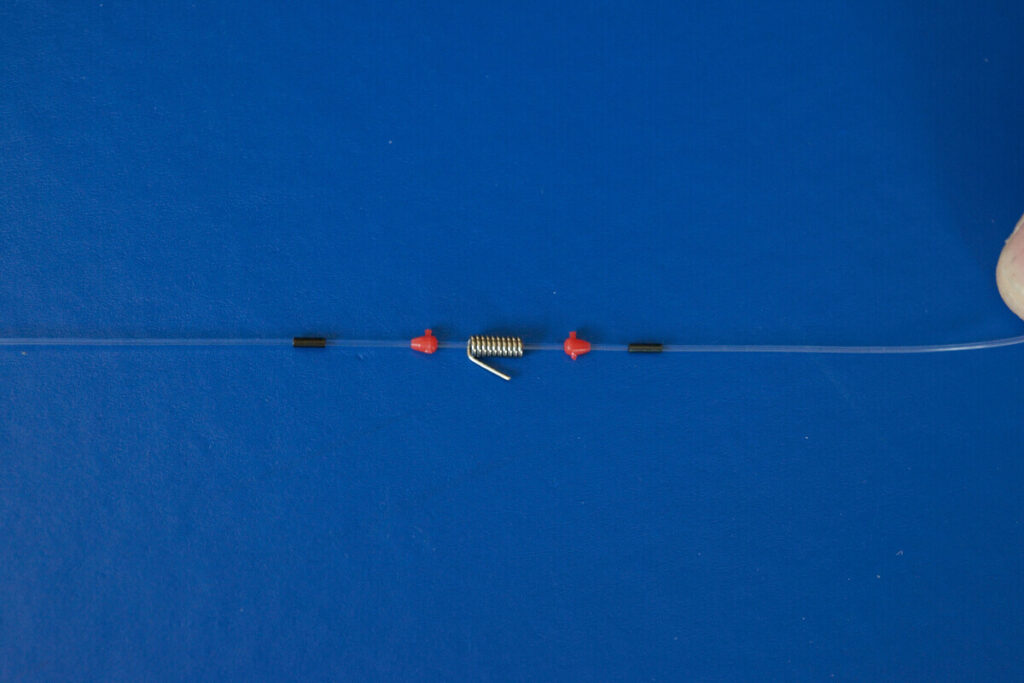
4 - Slide on a rig crimp, a 3mm bead, an inverted wire bait clip, another bead and a crimp. Leave these loose for now.
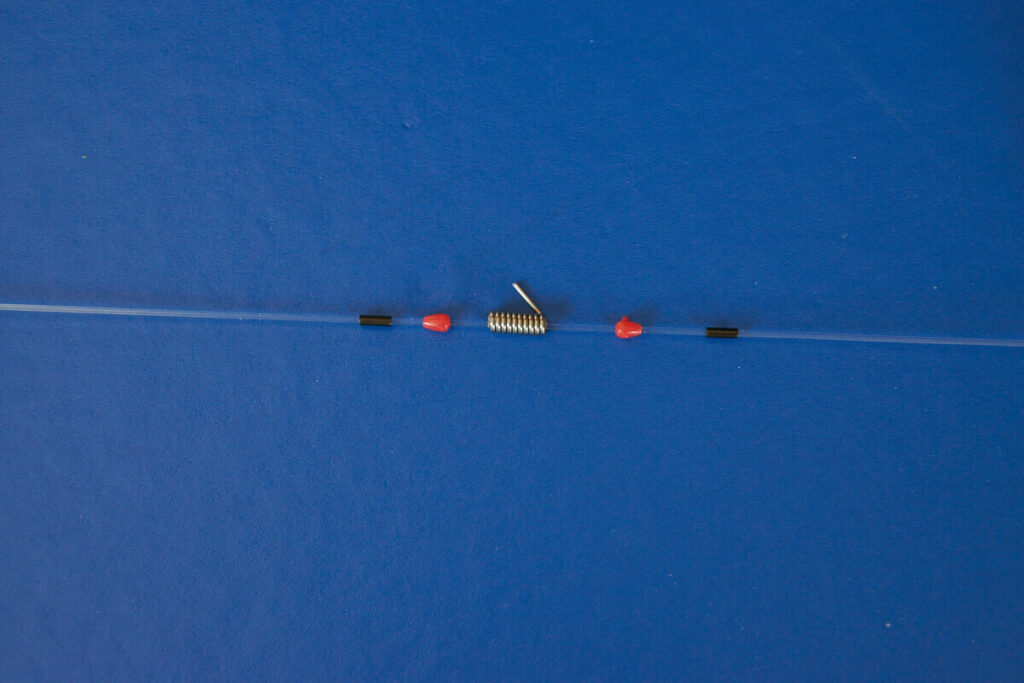
5 - Slide on a rig crimp, a 3mm bead, a wire bait clip the right way up, another bead and a crimp. Leave these loose for now.
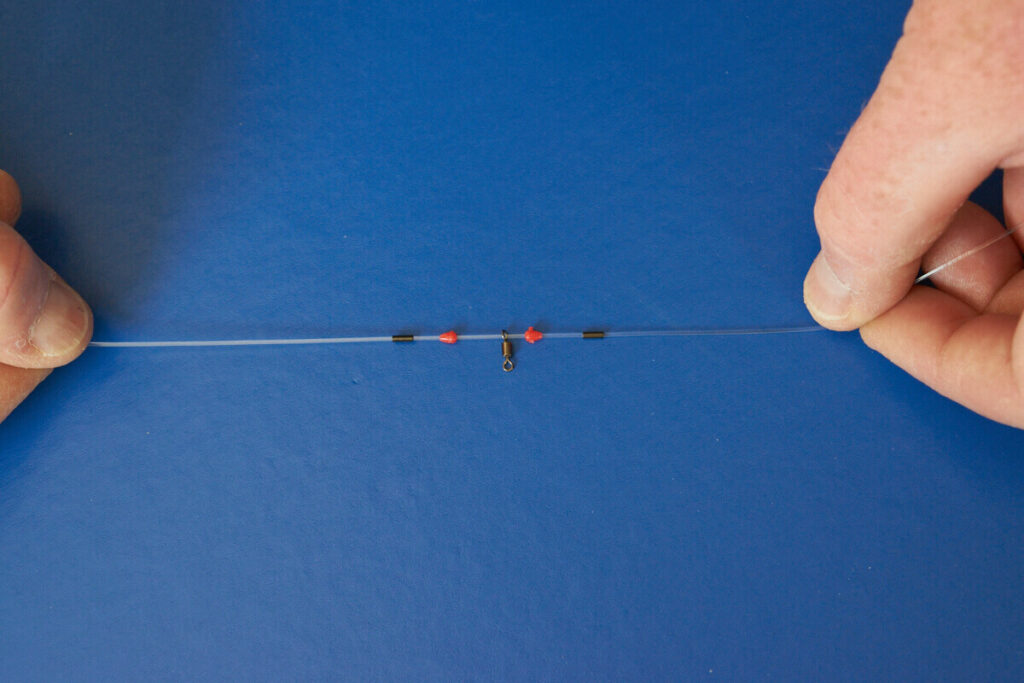
6 - Slide on a rig crimp, a 3mm bead, a size 10 rolling swivel, another 3mm bead and a crimp. Again leave these loose for now.
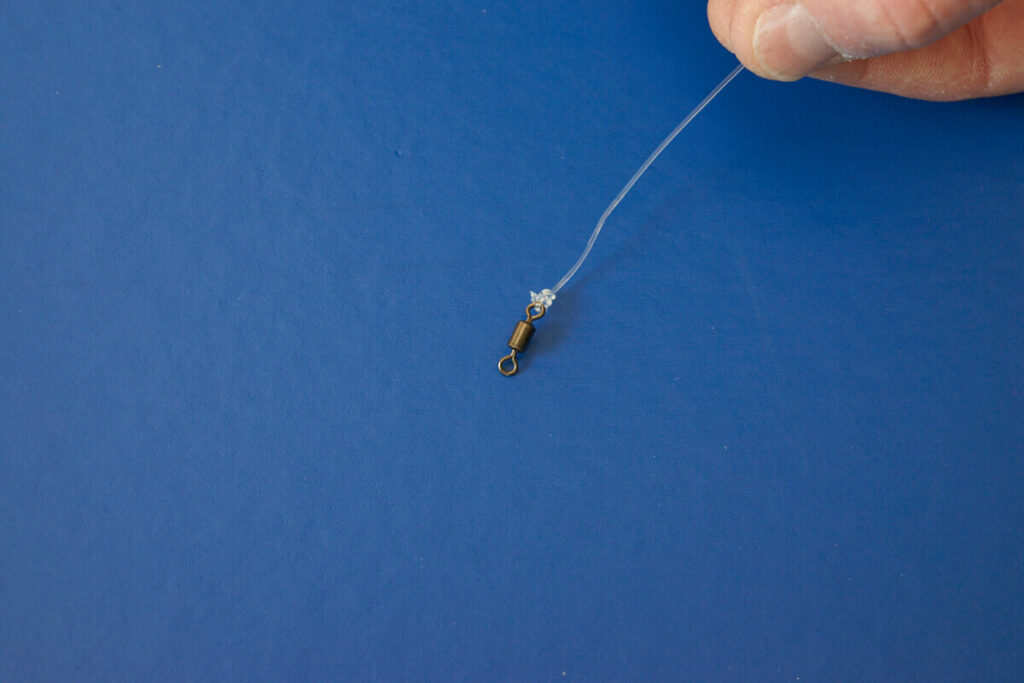
7 - Finish the main rig by tying on a size 4 rolling swivel.
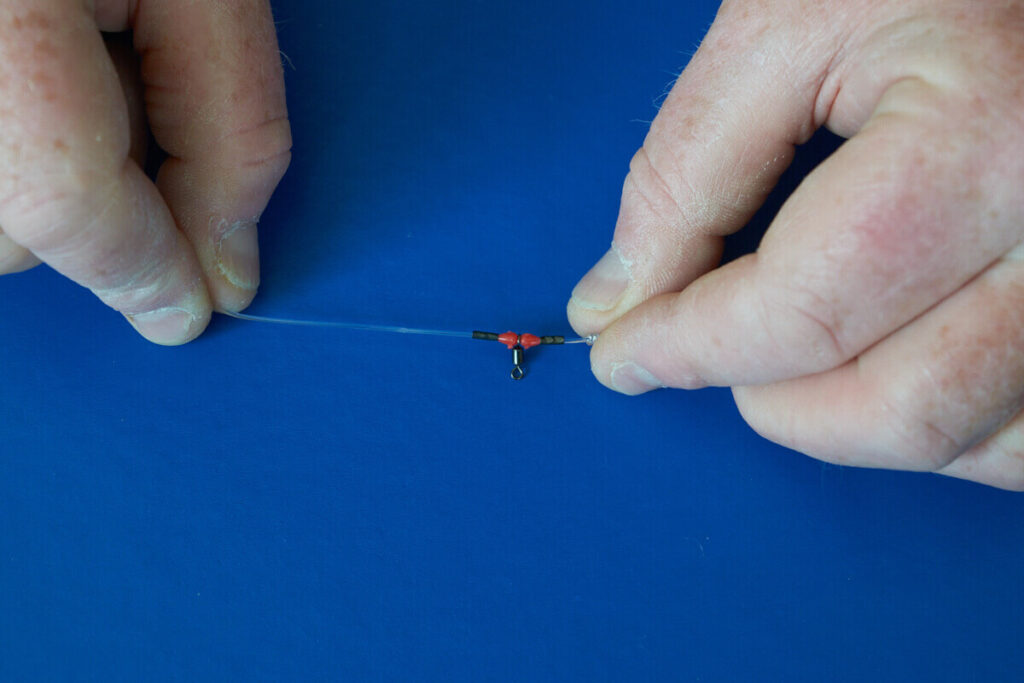
8 - Crimp the top crimp, bead and swivel sequence in place just below the top size 4 swivel.
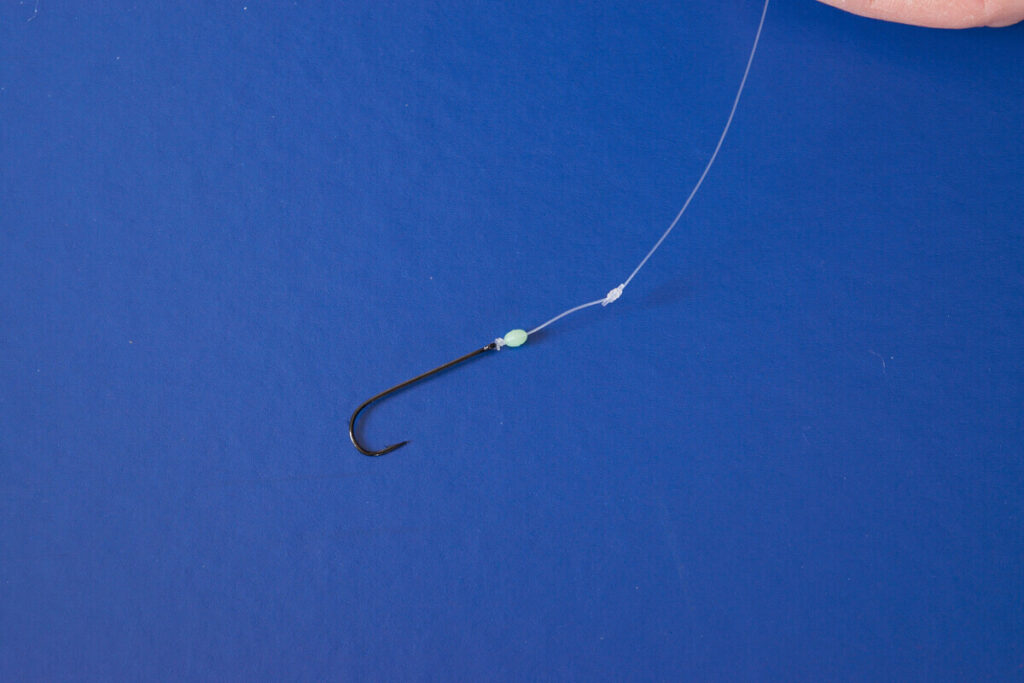
9 - To both hook trace swivels tie on 15-inches of 15lb Fluorocarbon, slide on a rubber rig stop and a sequin, or use a stop knot and 3mm bead, finish with a size 6 Kamasan B940 Aberdeen hook (we've used slightly bigger hooks in these images for demonstration purposes).
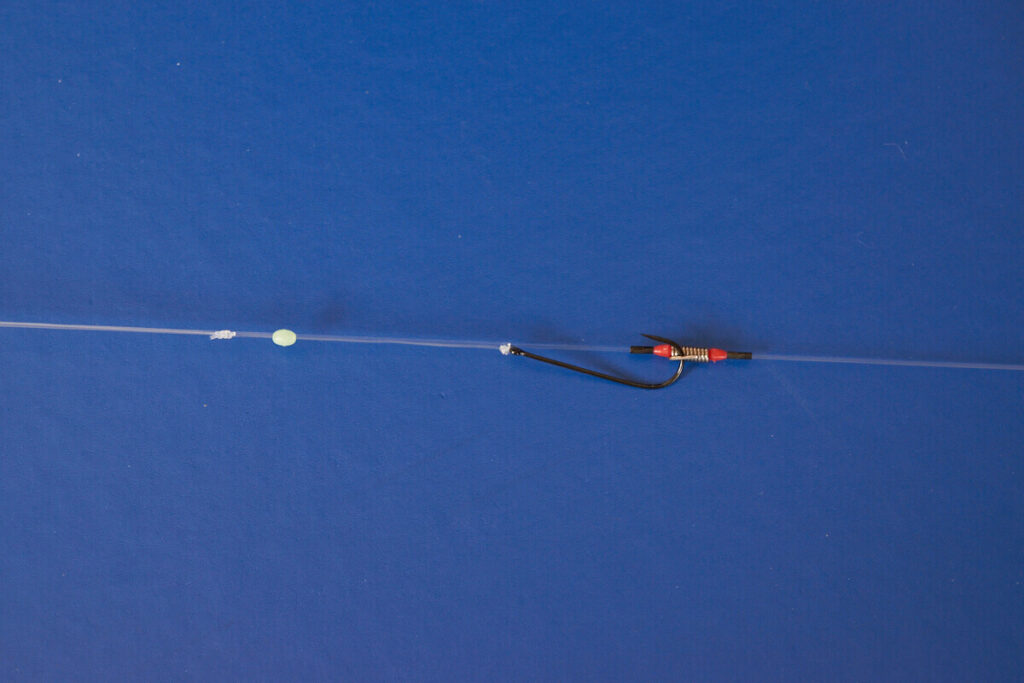
10 - Put the bottom hook in the bait clip above it, slide the crimp, beads and bait clip up the trace until the hook trace comes just tight, then crimp the bait clip in place lightly just tight enough that you can move it under finger pressure.
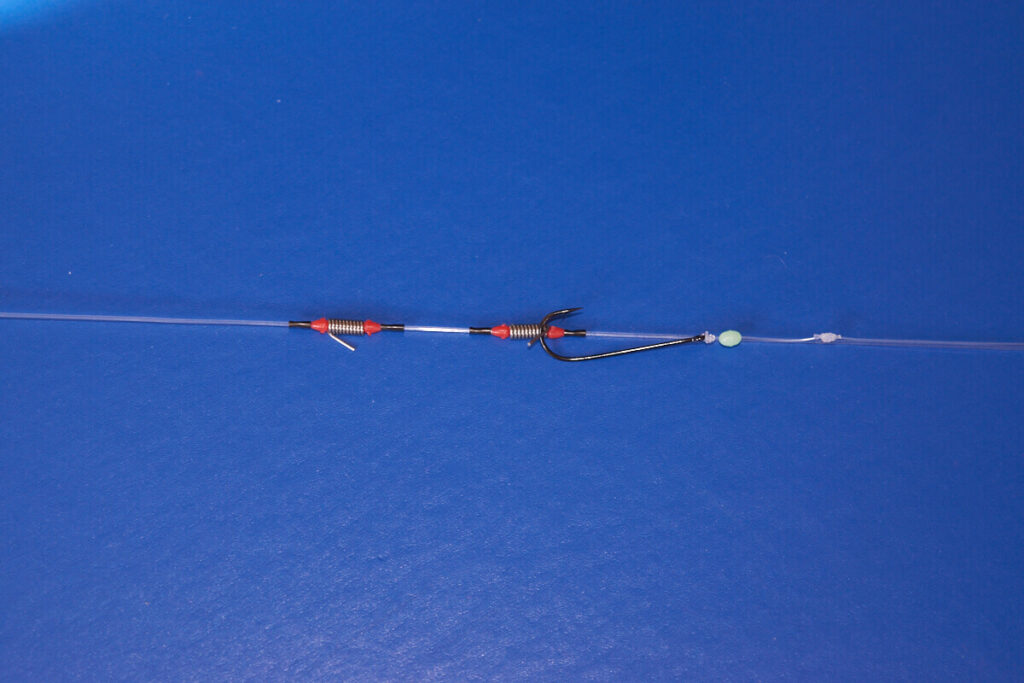
11 - Put the top hook in the bait clip below, slide the crimps and bait clip down the rig body until the hook trace comes just tight, and again lightly crimp in place just so the clip can move under heavy pressure.
The two hooks give you a double chance given that the red mullet come through in small groups, but also you increase the bait’s scent trail by having two hooks close together improving your chances of attracting fish.
This rig can also be fished at range using the bait clips, or fished as a flapper if the fish are closer.
The best shore fishing baits are mackerel strips cut into thin strips about 1-inch long and just 0.25-inch wide and from the white belly of a fresh mackerel, though frozen is ok. They will also take small strips of sandeel, whole small blow lugworm, sections of ragworm, small chunks of peeler crab, razorfish, cockle, mussel and small sand clam.
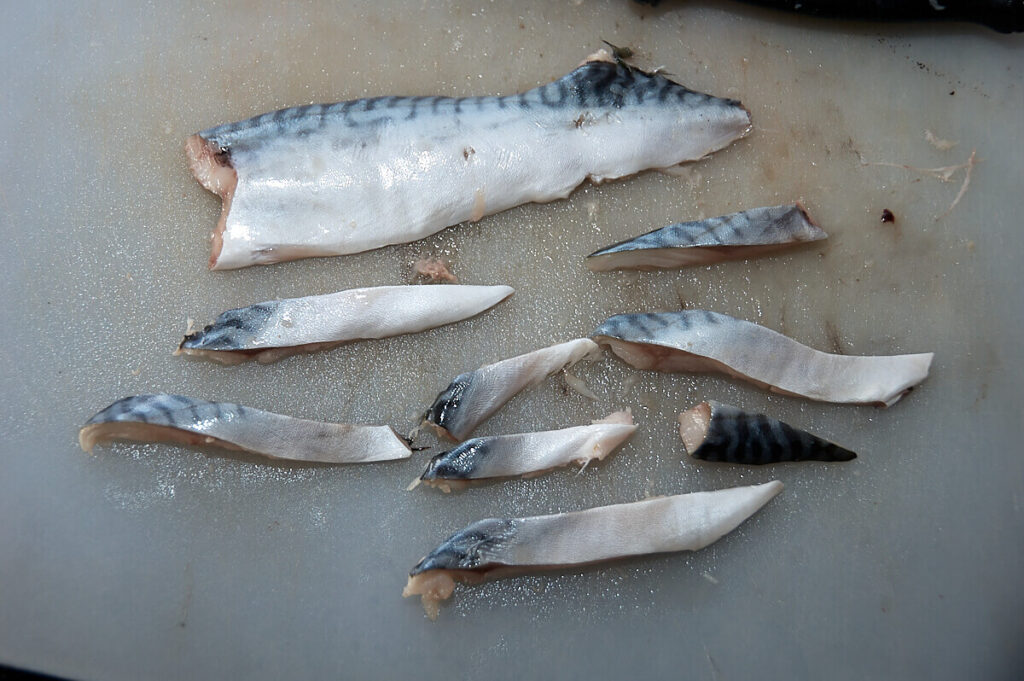
When baiting up do not overfill the hook. Use just enough bait to cover the hook with the hook point left well clear.
On steep-to beaches, the red mullet advance in with the tide. But at Low water, try to find areas where eelgrass or small kelp weed beds are and fish very tight to these. Also, areas where there is a mix of sand and shingle, or where a tide run creates small sandbanks that lift a few feet.
As the tide advances, the red mullet move off these and will come almost right into where the shingle shelf meets sand. It pays then, to fish two rods, one at range and one closer to help you find the fish. As soon as the tide turns to ebb out, increase your casting range aiming to re-hit the low tide mark which is where the bulk of the fish will head back to.
When fishing off man-made structure or rock ledges, then when possible, change from a release wire lead to a plain bomb and let this roll across the sand. This covers much more area and can find you small pockets of red mullet, especially when the seabed feature is totally clean. If the weight suddenly stops, then you’ve found a deeper depression which is where the red mullet will be. Again though, try one rod cast long and the other short to find the fish.
Bites are just that series of small rattles. Mostly, against the weight of the lead, they will hook themselves. Just lift into bites to fully make sure the hook is home.
About the red mullet
A somewhat localised and rare catch here in the UK and Ireland, but a fish that due to warmer seas generally, is another making its presence felt more and more and extending its range further and further north.
Although called “red mullet” they are actually not a mullet, not even closely related, they are from the goatfish family Mullidae.
They were a favoured dish of the ancient Romans who reared them in ponds in the Mediterranean and even taught them to come and feed at the sound of the carers voice or a bell. They were often sold for their own weight in silver indicating how highly prized they were for the table.
To be honest, there is little real information available about red mullet in UK waters from books and websites regards angling, yet they are becoming a very realistic target now with rising sea temperatures and their captures need recording better than they are currently.
Identification
A distinctive fish and one that’s hard to imagine being confused with any others, bar maybe the red gurnard.
The red mullet’s body is slightly rounded but flattened too, and the forehead is steeply arched. The eye sits high on the head and has two prominent scales below the eye on the upper cheek. It is covered in large body scales which easily come away when handled. Also look for the two long barbels that are prominent on the front underside of the lower jaw.
The colouration is bright red in some, but otherwise reddish-brown with yellow stripes and a darker stripe from head to tail. There is often a dark blotch at the top of the first dorsal fin. Coloration is governed by depth and light level. The colouring becomes more mottled in lower light levels and a much deeper red when in water exceeding 45ft (15m).

Distribution
They are found throughout the Mediterranean Sea, down the coast of North Africa, up the European coast through the Bay of Biscay and as far north as Holland.
In the UK they are a southern-based fish found throughout the English Channel as far as Kent and Essex, and occasionally Suffolk. In the west, they frequent Devon and Cornwall, inside the Bristol Channel, up the Welsh coast and as far north as Morecambe Bay and the Mull of Galloway, though red mullet here are on the very fringe of their northward migration and maybe be individuals.
In Ireland, they seem to be a rarer catch, though they are caught from the Wicklow and Wexford coast, but more so from Cork and Kerry. A hotspot seems to be in the Kilmore Quay to Cork Harbour area.
Habitat
Red mullet favour soft seabeds composed of sand, sand and mud, or mud. They also like to be close to eelgrass beds and shallow kelp weed. They like some depth of water being less likely to be caught on shallow surf beaches, but more likely caught from steep-to beaches where the depth is generally 12ft or deeper.
They also favour small sandy bays surrounded by rocks and are often caught from clean sand close to piers, breakwaters and jetties, mainly due to the added depth. Rock ledges that give onto clean sand can also be a good place to fish.
They will also be caught on hard rocky bottoms occasionally such as shallow reefs, but again it's mostly when close to weed beds and on reefs that are surrounded by sand or sandy patches.
They also form small groups or shoals of up to a dozen fish or so, sometimes more.
Diet
Its diet consists mainly of worms, small crustaceans and shellfish, but it will also scavenge off the seabed taking whatever it can find. It uses its barbels, which are covered in sensory pores designed to detect buried food, under the chin to dig down and feel for food items buried a few inches down, plus will dig out a round pit to uncover food that’s deeper.
Red mullet are not big fish averaging from just a few ounces up to 2lbs, but they can grow to 4lbs or so.
Season
The earliest you can expect red mullet in the south of the UK and Ireland is early July, but it’s usually the end of the month before numbers really grow. Further north off Wales and Morecambe Bay it’s often very late July or early August before they arrive. August and September are good months to target them, but once the sea temperatures peak or the autumnal storms arrive they are quickly gone.
In years with a cold late spring, then they may not show in any real numbers at all and will not penetrate as far north as they normally would. Equally, in years with an early warm spring and summer that induce higher than average sea temperatures, then their numbers will be at peak levels.
Tides
Red mullet can be caught on all sizes of tides, even smaller neaps when fishing deeper water from the boat. On the shallower marks, then they tend to come in with the bigger tides in the better numbers and are obviously more active during the faster tide flows.
They can be caught throughout the flooding tide, but generally, they are best targeted when the flow is running during the middle flood and middle ebb period.
Weather patterns
For consistent fishing, you’re looking for periods of calm, warm weather with settled seas and light onshore winds. Even light offshore winds can work well for this fish. They will tolerate some colour in the water, but they dislike rough seas and will be way out in deeper water. It will also take a few tides or two or three days for conditions to settle enough to their liking before they move back inshore.
Red mullet are caught by day, sometimes at dusk and dawn, but they are like wrasse and are not active by night.
Boat fishing for red mullet
Boat fishing tackle for red mullet
With the average fish being smaller than 2lbs, then very light tackle can be used. In deer water with some tide run, a 6/12lb class rod about 8ft in length matched to a small 6500 sized multiplier loaded with 20lb braid is effective. Add a fluorocarbon leader twice the length of the rod to eliminate any visual contact by the fish regarding the braid line colour.
In areas where there is less tide flow, then an HRF rod or light spinning rod casting no more than 2ozs is the better choice. Use a fixed spool reel size 3000, or even a smaller 2500 size, on this and load with a 12lb braid and again a short fluorocarbon leader of 15lbs. Very light gear like this helps combat the use of heavier leads in any tide run, plus gives maximum bite detection. Some anglers use normal 5 to 15g LRF rods and 2500 sized reels with 8lb braid in harbours and sheltered bays, so use what you think is appropriate regarding the conditions and depth you are fishing.

Hook sizes do not need to be any bigger than a size 2 Aberdeen. In fact, smaller sizes 4 to 6 Kamasan B940 hooks suit red mullet best. The longer shank avoids deeper hooking as these fish can easily swallow baits.
Rigs for red mullet
It is important to keep the baits hard on the seabed. To achieve this, we need to use a flowing trace rig. Here’s how to tie it:

1 - Onto the Fluorocarbon leader, slide on a 6’ clear coloured tube boom. The lead weight is attached to the link swivel on the boom.

2 - Slide on a 5mm bead.

3 - Below the bead tie on a side 6 rolling swivel and then tie on 36in of 15lb Fluorocarbon.

4 - Form a 30in loop in the Fluorocarbon and secure the loop by tying in a figure of eight knot. Then, cut the loop 6ins below the figure of eight knot to create one short and one long hook length.

5 - Tie on a size 4 to 6 Kamasan b940 Aberdeen or equivalent pattern.
This creates a rig that in a slack tide won’t tangle too easily when dropped to the seabed, but allows the baits to wash around gently over the seabed where the red mullet are hunting.
Some anglers say they’ve had success using brightly coloured beads, but this fish has good eyesight and the general feeling is that beads can actually put this fish off, so bear this in mind. Rigs that naturally present baits are the best way to go.
The above reason is also why we recommend the use of fluorocarbon hook lengths. In shallower clear water this is less easily seen by the fish and undoubtedly gives you an edge.
However, a quick and effective way to catch red mullet if present is to fish baited feathers. The ones to use are any with a lumo green body, silver tinsel type ones that imitate small fish, but especially the small shrimp rigs tied with lighter mono and smaller hooks of size 6 or 8. Fish strips work best again, but cut the strips even smaller, say less than an inch, even 0.5inch passing the hook just once through one end to leave lots of fish strip loose and hanging free.
Red mullet baits
We’ve already hinted that red mullet are scavengers and will eat most things and this is reflected in the baits they are most likely to take. Lugworm, ragworm, small chunks of crab, maddie rag all work, as will fresh cockles, small mussel baits when over rougher ground, also thin strips of squid and mackerel.

The top boat bait is a mackerel strip. This might be because it's the most used bait, but it's a must-have. Cut the strips small using a very sharp Stanley knife to get clear cut edges and a thin profile. The strip needs to be about 1-inch to 1.5-inches long and 0.25-inches wide. Use the white belly strip as this seems more effective especially if there is a little tide flow to make the bait wash over the seabed. It’s the same for squid too.
For worm baits, use only enough bait to fill the hook shank and bend, no more. Same with cockle and mussel.
Also try tipping the hook point with a small square of mackerel whatever bait you are using, just to add that bit more smell and make the fish take at the hook point end.
Boat fishing for red mullet techniques
The only technique really, to fishing for red mullet, is to identify exactly where they are being caught from by using bush telegraph, magazines, websites, tackle shops, and any other sources of information you can utilise and fish those specific spots. That is the key element!
The actual fishing is very basic during periods of slack water or when the tide run is slow. Just ledger fish the flowing trace hard on the seabed and await results. It can pay to occasionally lift the boom and the baits up off the seabed then drop them back. This added movement and especially the fluttering down of the baits back to the seabed will get noticed by nearby red mullet and draw them in.
Bites are a series of little fast rattles. Wait until the second series of rattles then just lift into the fish and keep them coming.
As the tide run picks up and the boat drift speed increases, then as you drift along over the ground, keep letting a little line off, say 10ft every 30 seconds or so. This gives any chasing fish time to catch up and intercept a bait.
Bites are again two or three series of fast rattles. When you feel the first rattles release a little line to let the fish eat the bait. Now, just let the line tighten into the fish and lift the rod to set the hook.
If you choose to use feather or shrimp rigs, don’t lift the rod tip up too high when working the feathers. Remember that the red mullet are tight on the seabed. Just a few inches of lift is enough. Use the lightest lead weight you can to do this. Bigger leads can put red mullet off.
Red mullet boat fishing tips
- In very calm seas with little drift, drop to Fluorocarbon of just 6lbs and the smaller size 6 to 8 hooks and smaller baits. This can get bites when nothing else works.
- Remember that red mullet swim in small schools, so if you catch one fish aim to get fresh baits down there in double quick time as you’ve a good chance of catching more.
- If you haven’t got lumo bodied feathers with you, try sliding onto the hook length above the hook two or three small 3mm lumo beads then the hook. These can work just as well as baited feathers when jigged up and down close to the seabed.
Shore fishing for red mullet
Shore tides for red mullet
From the shore red mullet are most active during the bigger spring tides when the tide flow is stronger. The best tides are the tides rising upwards every day towards and including the biggest tides. As the tide cycle peaks and the tides then start to reduce in size, then the fish can leave the shallow marks and move out to deeper water.
Neap tides can be OK on the deeper marks such as when fishing man-made structures, or small bays, but on the open shore they are less productive.
This activity is mirrored within the tide itself with the period of flooding tide giving the best fishing and the slack water periods less so. However, unless the water is deepish, say 30ft or more, once the ebb does start to pick up speed, they quickly drop back to deeper water and are often outside casting range.
Shore weather patterns
Again, you need to look for periods of calm, warm weather with very settled seas for the best fishing. They will feed in choppy seas if they have the depth over them, say 15ft or more, but generally, the more rough the sea the quicker your chances lessen. They also like gentle warm winds off the sea, sometimes warm winds off the land but anything over F4 is working against you. A light onshore breeze can increase your chances on a very bright day as the ruffle and ripple on the water reduces the amount of light entering the water column.
Remember they are not nocturnal and feed only in daylight, sometimes at dusk and dawn. Off the shore, overcast days can fish better than bright sunny days, but don’t let the latter put you off trying as they feed when it suits them.
They will tolerate coloured water to some extent, but not heavy suspended sediment directly after a blow. Ideally, the water should have some clarity to it.
Shore fishing red mullet tackle
As ever, much depends on the distance you need to catch and the tide run. For the majority of marks a decent cast will need to be made to reach the fish. This necessitates the use of a standard 4-6 beachcaster 12 to 13ft long with a 6500 sized multiplier reel loaded with 15lb to 18lb line and a 60lb shock leader. Also good are the Euro style rods between 14 and 15ft with a 7500 sized fixed spool with a long cast reel and loaded with 20 to 30lb braid and a 60lb shock leader.
On the deeper marks with less tide run, then the 2-4oz bass rod is the better choice, again with 5500 to 6500 reel loaded with 15lb line and a 30lb shock leader. This tackle is also suitable when fishing off piers, breakwaters and jetties.
As when boat fishing, keep hooks small, no bigger than a size 4 Aberdeens. Also have a range of leads with you including release wire leads, but also some plain bombs that you can let roll along the bottom.
Shore rigs for red mullet
The perfect rig for shore red mullet is the 1 up/1 down rig. This is designed so that the lower hook trace is hard on the seabed. And, if you fish at range or fish with a slight bow in the line, the top hook also is hard on the seabed where the fish are feeding. Here’s how to tie it….

1 - Begin with 46-inches of 60lb clear mono.

2 - At one end tie on a Gemini Lead Link.

3 - Slide on a rig crimp, a 3mm bead, a size 10 rolling swivel, another 3mm bead and a crimp. Crimp these in place tight behind the lead link.

4 - Slide on a rig crimp, a 3mm bead, an inverted wire bait clip, another bead and a crimp. Leave these loose for now.

5 - Slide on a rig crimp, a 3mm bead, a wire bait clip the right way up, another bead and a crimp. Leave these loose for now.

6 - Slide on a rig crimp, a 3mm bead, a size 10 rolling swivel, another 3mm bead and a crimp. Again leave these loose for now.

7 - Finish the main rig by tying on a size 4 rolling swivel.

8 - Crimp the top crimp, bead and swivel sequence in place just below the top size 4 swivel.

9 - To both hook trace swivels tie on 15-inches of 15lb Fluorocarbon, slide on a rubber rig stop and a sequin, or use a stop knot and 3mm bead, finish with a size 6 Kamasan B940 Aberdeen hook (we've used slightly bigger hooks in these images for demonstration purposes).

10 - Put the bottom hook in the bait clip above it, slide the crimp, beads and bait clip up the trace until the hook trace comes just tight, then crimp the bait clip in place lightly just tight enough that you can move it under finger pressure.

11 - Put the top hook in the bait clip below, slide the crimps and bait clip down the rig body until the hook trace comes just tight, and again lightly crimp in place just so the clip can move under heavy pressure.
The two hooks give you a double chance given that the red mullet come through in small groups, but also you increase the bait’s scent trail by having two hooks close together improving your chances of attracting fish.
This rig can also be fished at range using the bait clips, or fished as a flapper if the fish are closer.
Shore red mullet baits
The best shore fishing baits are mackerel strips cut into thin strips about 1-inch long and just 0.25-inch wide and from the white belly of a fresh mackerel, though frozen is ok. They will also take small strips of sandeel, whole small blow lugworm, sections of ragworm, small chunks of peeler crab, razorfish, cockle, mussel and small sand clam.

When baiting up do not overfill the hook. Use just enough bait to cover the hook with the hook point left well clear.
Shore fishing red mullet techniques
On steep-to beaches, the red mullet advance in with the tide. But at Low water, try to find areas where eelgrass or small kelp weed beds are and fish very tight to these. Also, areas where there is a mix of sand and shingle, or where a tide run creates small sandbanks that lift a few feet.
As the tide advances, the red mullet move off these and will come almost right into where the shingle shelf meets sand. It pays then, to fish two rods, one at range and one closer to help you find the fish. As soon as the tide turns to ebb out, increase your casting range aiming to re-hit the low tide mark which is where the bulk of the fish will head back to.
When fishing off man-made structure or rock ledges, then when possible, change from a release wire lead to a plain bomb and let this roll across the sand. This covers much more area and can find you small pockets of red mullet, especially when the seabed feature is totally clean. If the weight suddenly stops, then you’ve found a deeper depression which is where the red mullet will be. Again though, try one rod cast long and the other short to find the fish.
Bites are just that series of small rattles. Mostly, against the weight of the lead, they will hook themselves. Just lift into bites to fully make sure the hook is home.
Shore fishing red mullet top tips
- As before, do not be afraid to reduce both the breaking strain of the hook trace, say down from 15lbs to 10lbs or even 8lbs, also the size of the hook to a size 6 or 8. This, and smaller baits, can get you bites when nothing else will.
- Red mullet will not only advance in from the low water line, but tend to face into the oncoming tide when travelling as a school. This is another reason why fishing two rods works well at different casting distances. If you get a bite and fish on the long rod, put both out at the same distance. Or, if the short rod scores, drop both rods in close but some distance apart when viewed left to right.
- If you need more movement in the bait, try adding a float bead above the hook trapped by a tight-fitting rubber float stop at each side. This can be slid up and down and tends to work best with about 4-inches of line between the float bead and the top of the hook. This works well with smaller worm baits, especially two or three maddie rag with the tail left to wriggle freely below the hook.

